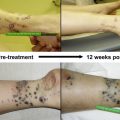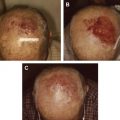
In this issue of Surgical Oncology Clinics of North America , we aim to highlight advances in the treatment of melanoma in the last five years. Any publication discussing the treatment of melanoma would be remiss in not acknowledging the seminal role of Dr Donald Morton, who sadly passed away during the production of this issue. Dr Morton played a seminal role in the development of the field of melanoma surgical oncology with his pioneering studies on sentinel lymph node mapping and biopsy as well as vaccine therapies and metastasectomy for patients with stage IV disease. In addition, he trained many of the current leaders in the field. We will surely miss his wonderful insights and contributions.
In the first article, Dr Edmund Bartlett and Dr Giorgos Karakousis have outlined the important changes to the 7th edition of the AJCC staging manual for melanoma, including relevant prognostic factors and the importance of mitotic rate. Dr David Elder, a well-known pathologist, provides an excellent primer on melanoma pathology in the second article. He presents important information regarding various subtypes of melanoma and describes important immunohistochemical and molecular diagnostic information. The surgical treatment of primary melanoma, including a breakdown on surgical margins, is provided by Dr Jeffrey Farma and his colleagues at Fox Chase Cancer Center. I have also asked him to discuss the treatment of locally recurrent melanoma. Dr Jonathan Zager gives an excellent breakdown on the importance of sentinel node biopsy for patients with melanoma, including in those with thin and thick lesions. He also describes some newer and more sophisticated imaging and mapping techniques. Radical lymph node dissections for patients with clinically positive or sentinel node–positive lymph nodes are outlined in detail by Keith Delman and his colleagues at Emory. They provide wonderful descriptions and figures in this article.
The next six articles primarily concern those patients who have developed metastatic disease. Dr Mark Faries, a disciple of Dr Morton, gives a systematic review of the rationale for surgical therapy for patients with metastatic disease. This is followed by two articles concerning the treatment of patients with unresectable satellite and in-transit recurrences, which are confined to the extremities. One of the leaders in the surgical field, Dr Douglas Tyler, gives an excellent overview of isolated limb perfusion and infusion, including his group’s attempts to push the envelope with newer targeted agents. On the other hand, my colleagues, Dr Kendra Feeney and Dr Mike Mastrangelo, provide an excellent treatise on injectional and local therapy, including TVEC, which has had promising results in recent clinical trials. Dr Wenyin Shi supplies a nice summary of the use of radiation therapy for adjuvant therapy and treatment of metastatic disease, especially to the brain and spine. Finally, we have well-written reviews of systemic therapies by Dr Charlotte Ariyan from Sloan-Kettering (Immunotherapies) and Dr Stergios Moschos from UNC-Chapel Hill (Targeted therapies). In the final article, I have asked Dr Janice Cormier and her colleagues from MD Anderson to discuss evidence-based approaches to long-term follow-up of patients diagnosed with melanoma after their surgical therapy.
I would like to express my sincerest gratitude to all of those at Elsevier who have guided me through this process, including Jessica McCool, Meredith Clinton, and Stephanie Carter. I would also like to express my thanks to Dr Nicholas Petrelli for his invitation to serve as guest editor for this issue; I am truly honored to have this opportunity. My hope is that this issue of Surgical Oncology Clinics of North America provides an excellent reference and resource to those of us who are involved in the day-to-day care of patients with melanoma. It is hoped that it will spur the next generation of dedicated clinicians to new and exciting discoveries to further advances in this important field of study.
Stay updated, free articles. Join our Telegram channel

Full access? Get Clinical Tree







